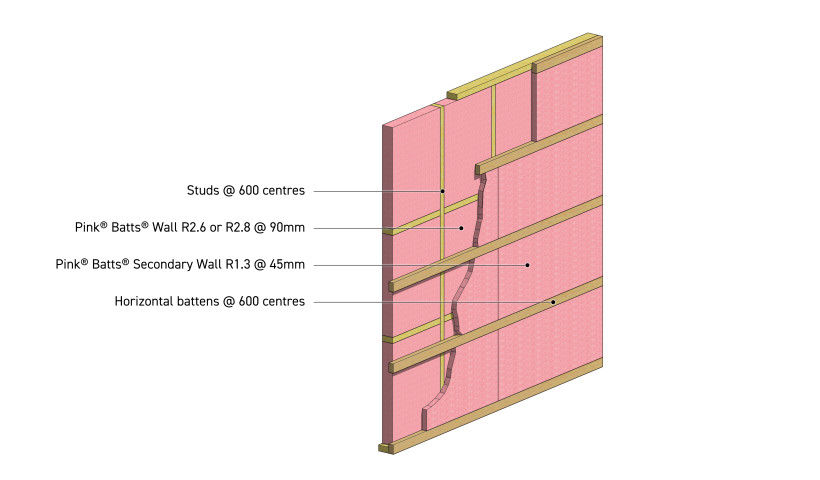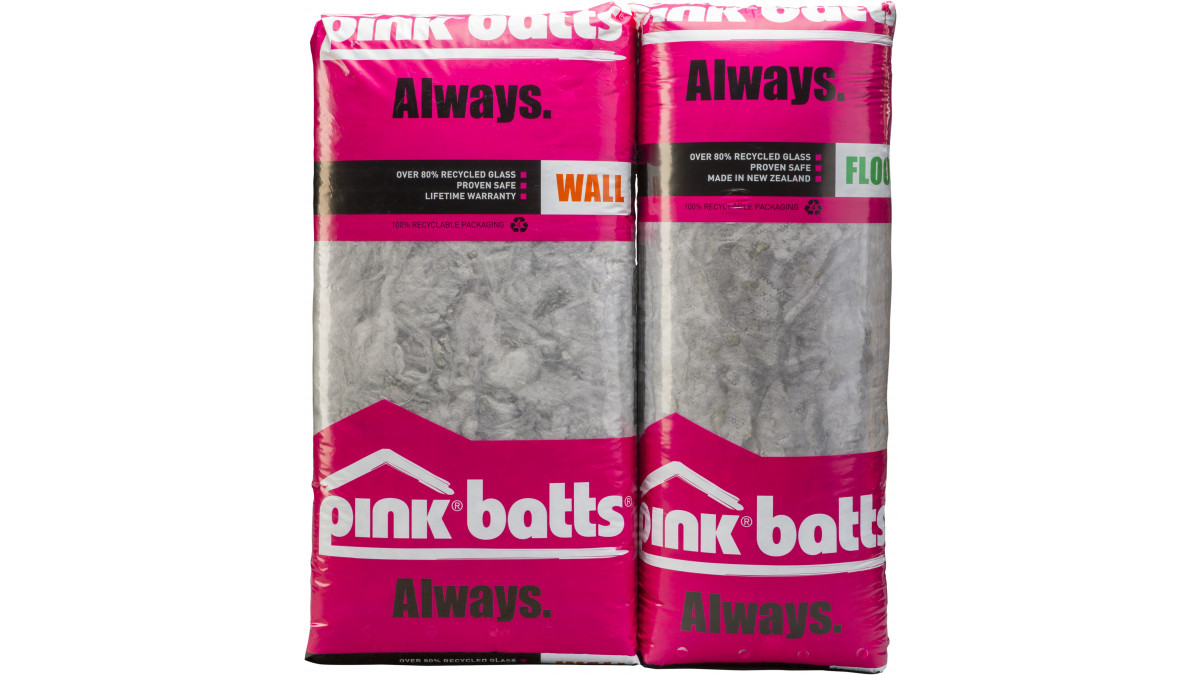
Intertenancy walls are regulated by the NZBC Clause G6 — Airborne and Impact Sound. This clause establishes that the Sound Transmission Class (STC) and Impact Insulation Class (IIC) of walls, floors and ceilings shall be no less than 55.
There are no regulations for internal walls, so is there any acoustic benefit from installing insulation in the internal walls?
Short answer is yes. Take the bathroom as an example, insulation will help to improve noise control as it will absorb the sound, reducing the noise transmission between the bathroom, laundry and rest of the house, allowing for more privacy, and reducing disturbance from sounds (such as in en-suites). Without Pink Batts insulation in the internal walls, noise such as conversations may be easier to hear from other rooms.
What impact does Pink Batts Silencer insulation have on STC value?
- Where no Pink Batts insulation is installed in the internal walls, the STC value of that system is 36.
- Adding Pink Batts Silencer to the same wall construction can increase the STC value to 43.
Recommended:
- Standard benefits: Use Pink Batts Silencer and standard GIB to make loud speech only audible.
- Best results: Use Pink Batts Silencer, GIB Noiseline (instead of 10mm GIB standard) and GIB Soundseal around the perimeter.
- As well as the bathroom it is also recommended to install Pink Batts Silencer in strategic areas (kitchen, quiet zones, between loud areas and sleeping areas) to maximise the level of acoustic comfort in the home.
Noise control doesn’t create complete silence; it makes homes more comfortable to be in — noise transmission is decreased but not necessarily eliminated. Have a look at other areas of the home that can be improved to reduce noise transmission both in the build stage and during renovations, and decorating on the Smarter Homes website.













 New Products
New Products
















 Popular Products from Comfortech Building Performance Solutions
Popular Products from Comfortech Building Performance Solutions


 Posts by Comfortech Technical
Posts by Comfortech Technical Most Popular
Most Popular



